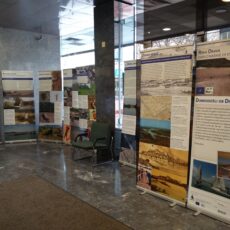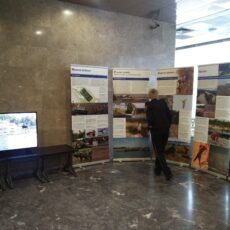With the New Year 2018, we invite you to the Ministry of the Environment and Spatial Planning to see a new exhibition created within the LIFE programme. The project, named “Riparian Ecosystem Restoration of the Lower Drava River in Slovenia” or shorter LIVEDRAVA, started in September 2012 and ended with the end of 2017. DOPPS – BirdLife Slovenia together with the partners VGB Maribor, VGP Drava Ptuj and Municipality of Ptuj, implemented a project in the area of the Drava river – between Maribor and Središče ob Dravi.
In the past, the largest Slovenian river has shaped the landscape and affects the lives of people. The Drava was an important transport and communication axis, while the use of the area was mainly limited to pastures and meadows. How is the largest Slovenian river? We could say that it is subordinate to energy use and intensive agriculture – thereby jeopardizing biotic and landscape diversity. The project team therefore based its activities on three main components: nature conservation, education and scientific research. With them, it has achieved one of the main goals – to find and test a solution for the provision of flood protection while maintaining a favourable state of nature. In doing so, the team actively included volunteers in all levels of the natural reserve of the Ormož lagoon and educated and informed the public about activities in harmony with nature.
The team believes that, despite the great visibility of Slovenia’s nature, nature conservation tourism is still at the beginning. Therefore the project team wanted to improve the situation at protected area and offer rich possibilities for cooperation with local producers in both management and marketing opportunities.
Visit Ormož lagoons and take a look at the beauty of the river Drava. You are also kindly invited to visit the exhibition that takes place in the lobby of the Ministry of the Environment and Spatial Planning.
The value of the project was just under EUR 4.5 million. The European Union contribution is 50%, the Ministry of the Environment and Spatial Planning 20% and last 30% are contributed by the partners and co-financers themselves.
- Exhibition LIVEDRAVA
- Exhibition LIVEDRAVA
- Exhibition LIVEDRAVA









